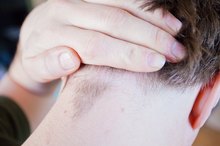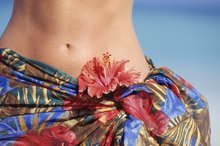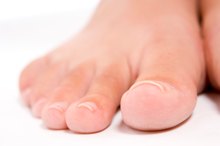How to Get Rid of an Infected Ingrown Hair
Ingrown hairs can be a painful nuisance. But luckily there are ways to go about treating and getting rid of an ingrown hair that has become infected. Ingrown hairs can be found on any part of the body that has hair and can happen for different reasons: shaving, lack of moisture of the skin, embedded oil in hair follicles, or even dead skin cell buildup, just to name a few.
Clean the area. It is important to make sure you wash the area around the infected ingrown hair or take a shower to make sure the area is clean. You want to remove any bacteria that may be present before attempting to remove the ingrown hair.
How to Treat Ingrown Hairs on the Scalp
Learn More
Soak a clean cloth in warm or hot water. You don't want the water to be really hot, but get it as close to hot as you can. Soak the cloth in the water, then lay it across the infected ingrown hair and surrounding area. Leave the cloth on for about 3 minutes so the skin will moisten, causing the ingrown hair to loosen. Sometimes this will make the ingrown hair come up to the surface so you can check to see if this has happened. If it has not, place the cloth over the area again and wait until it does.
Lift out the ingrown hair. Using your tweezers, gently lift the infected ingrown hair from the hair follicle. You can 'pluck' the hair as well, but if the hair has loosened enough from the warm cloth, you should be able to just simply "lift'"the hair out.
Does Trimming Your Hair Really Make it Grow Faster?
Learn More
Apply peroxide. Once you have removed the infected ingrown hair, it is time to apply some hydrogen peroxide. If there is oozing pus present, simply clean it off with some tissue and then put the hydrogen peroxide on. If possible, use a dropper or some other tool that won't be at risk of coming in contact with the area like a cotton ball would.
Apply a bandage if needed. Depending on where your infected ingrown hair is, you might need to apply a bandage. This is more for areas that are likely to become chafed, such as the inner thigh.
Apply hydrogen peroxide daily. Once you have removed the infected ingrown hair and cleaned the area, you should apply hydrogen peroxide to the area two times a day. This will help speed up the healing process and prevent it from becoming infected yet again.
Tips
There are other ways to fight ingrown hairs, including homemade treatments or store-bought treatments. See Resources for some great ideas. If you experience ingrown hairs often, consider adjusting your shaving or wax routine or even look to another form of removing hair to further avoid the ingrown hairs.
Related Articles
References
- MedlinePlus. Acne.
- Cleveland Clinic. Ingrown hair. Updated February 28, 2018.
- Merck Manuals. Ingrown beard hairs. Updated October 2019.
- Cleveland Clinic. Ingrown hair: Management and treatment. Updated February 28, 2018.
- Ogunbiyi A. Pseudofolliculitis barbae; current treatment options. Clin Cosmet Investig Dermatol. 2019;12:241-247. doi:10.2147/CCID.S149250
- MedlinePlus. Folliculitis. Updated October 8, 2018.
- Zaenglein AL, Pathy AL, Schlosser BJ, Alikhan A, Baldwin HE, et. al. Guidelines of care for the management of acne vulgaris. Journal of the American Academy of Dermatology. 2016; 74(5): 945-73. doi:10.1016/j.jaad.2015.12.037
Tips
- There are other ways to fight ingrown hairs, including homemade treatments or store-bought treatments. See Resources for some great ideas. If you experience ingrown hairs often, consider adjusting your shaving or wax routine or even look to another form of removing hair to further avoid the ingrown hairs.
Writer Bio
Megan Shannon resides in Arkansas and has been freelance writing since 2006. Her goal is to build her experience and finds great success doing so working at Demand Studios. Since working at Demand, Shannon has increased her knowledge in various topics, but her favorite topic is health.







